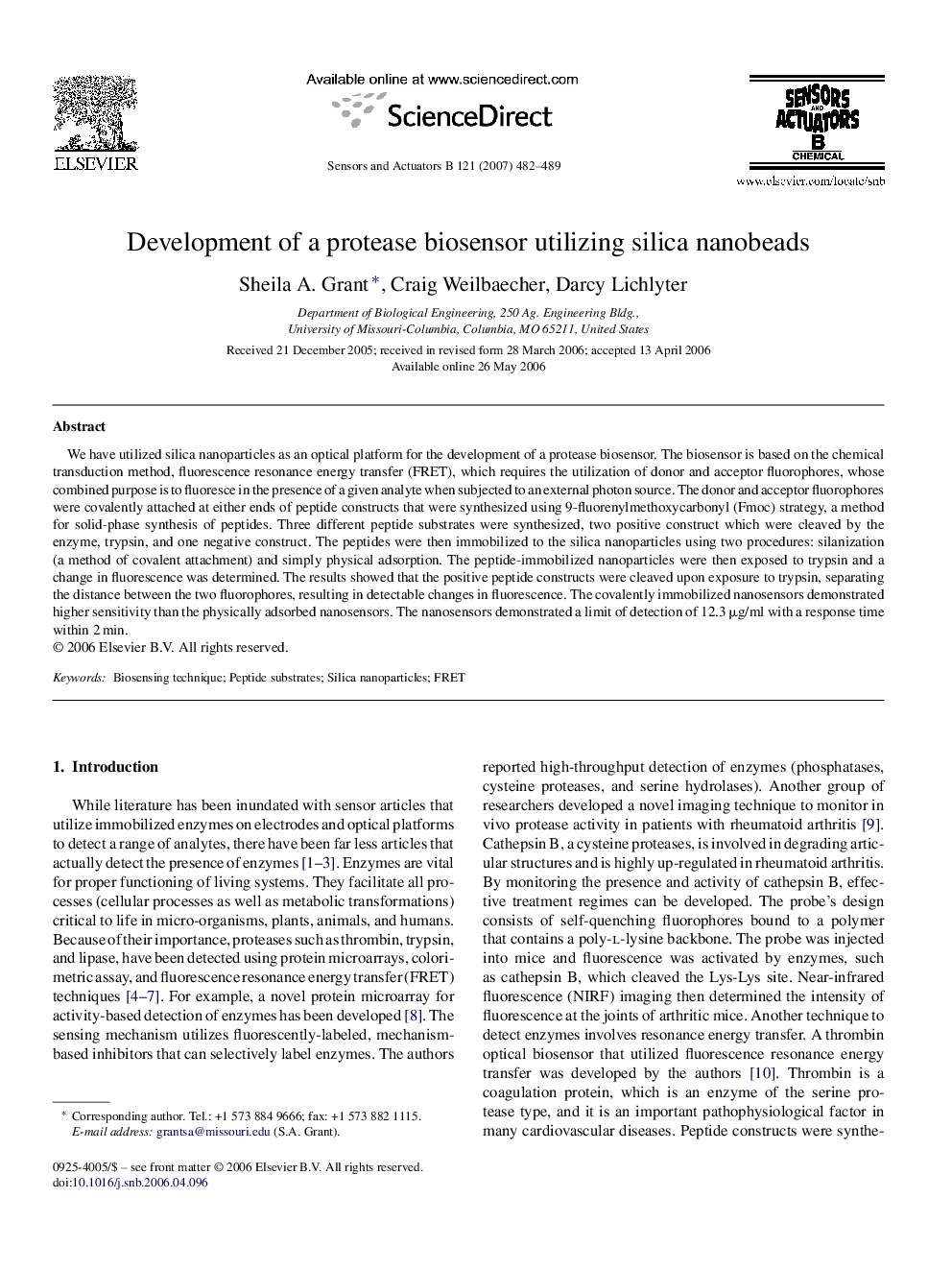| Article ID | Journal | Published Year | Pages | File Type |
|---|---|---|---|---|
| 746918 | Sensors and Actuators B: Chemical | 2007 | 8 Pages |
We have utilized silica nanoparticles as an optical platform for the development of a protease biosensor. The biosensor is based on the chemical transduction method, fluorescence resonance energy transfer (FRET), which requires the utilization of donor and acceptor fluorophores, whose combined purpose is to fluoresce in the presence of a given analyte when subjected to an external photon source. The donor and acceptor fluorophores were covalently attached at either ends of peptide constructs that were synthesized using 9-fluorenylmethoxycarbonyl (Fmoc) strategy, a method for solid-phase synthesis of peptides. Three different peptide substrates were synthesized, two positive construct which were cleaved by the enzyme, trypsin, and one negative construct. The peptides were then immobilized to the silica nanoparticles using two procedures: silanization (a method of covalent attachment) and simply physical adsorption. The peptide-immobilized nanoparticles were then exposed to trypsin and a change in fluorescence was determined. The results showed that the positive peptide constructs were cleaved upon exposure to trypsin, separating the distance between the two fluorophores, resulting in detectable changes in fluorescence. The covalently immobilized nanosensors demonstrated higher sensitivity than the physically adsorbed nanosensors. The nanosensors demonstrated a limit of detection of 12.3 μg/ml with a response time within 2 min.
